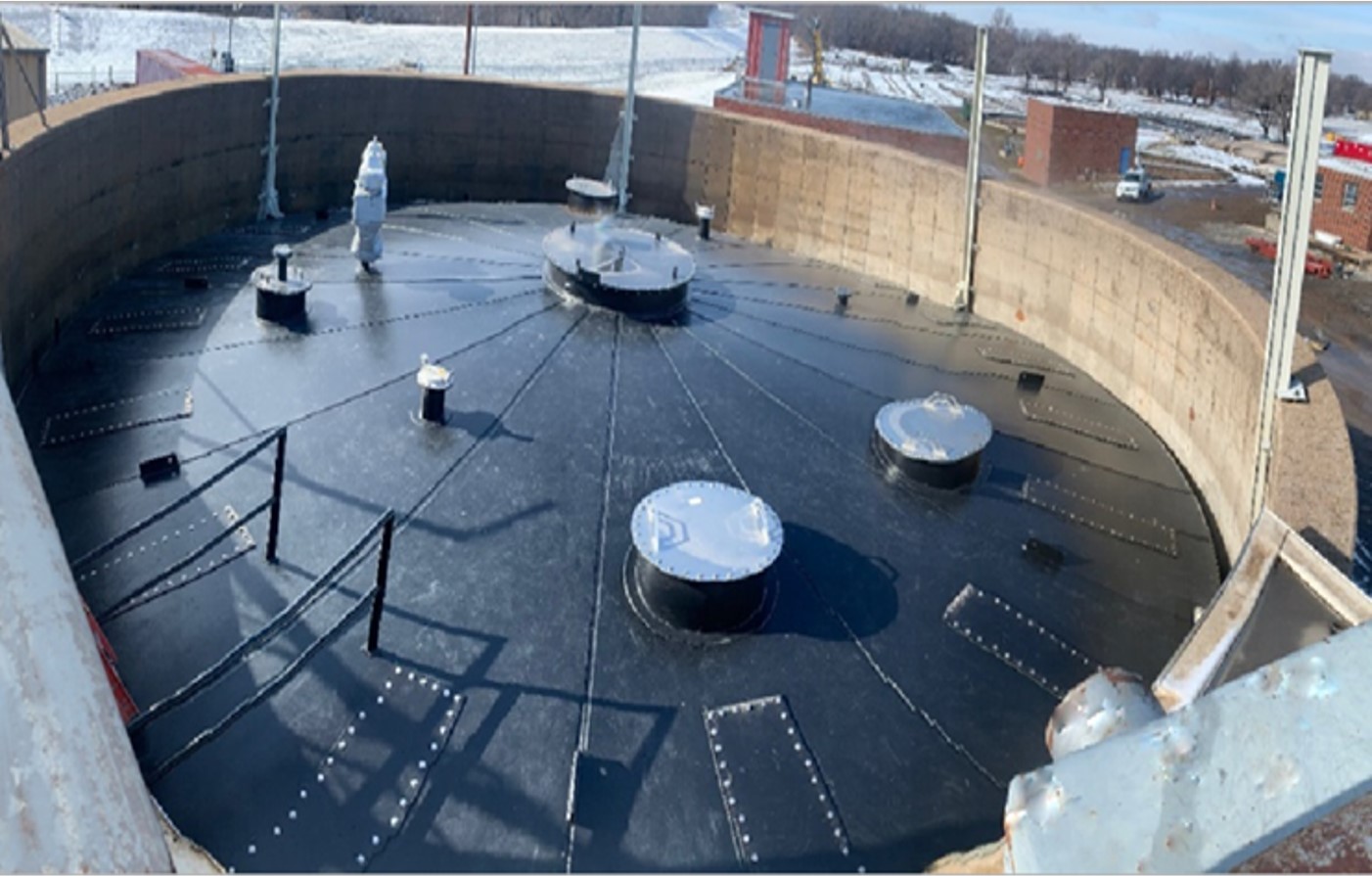
About Digester Covers
A cost-efficient primary digester, designed for sludge levels that do not vary. It can also be used as a secondary digester when gas can be stored through other means. The fixed digester has a limited gas storage capacity, they also do not easily allow for variation in the total sludge volume.
Varying sludge volume requires maintaining gas pressure.
Fixed covers are anchored to the top of the concrete tank. The side skirt only needs a length of the freeboard + operating pressure which typically allows for a relatively shorter overall length.
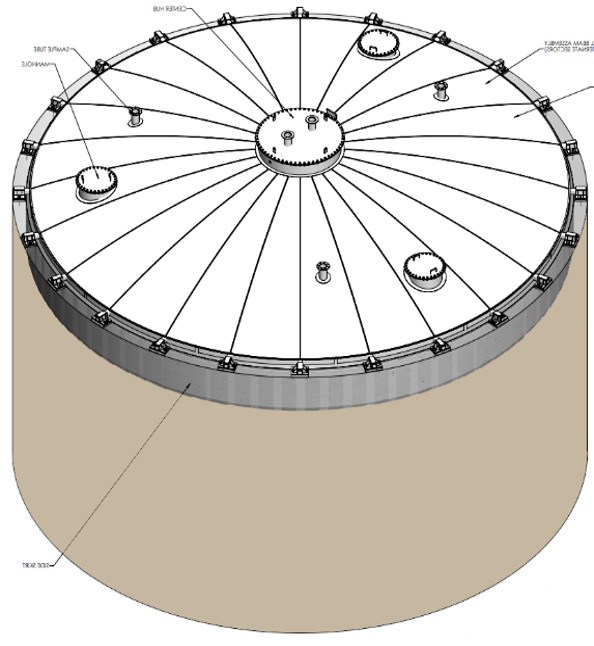
Gasholder Beam Digester Cover
A gasholder beam digester cover can be used as a primary or secondary digester that requires varying volumes of gas storage. It also allows varying levels of sludge (as compared to the fixed
digester cover.) The low friction slide guides are low maintenance compared to rolling guides. This cover does not
require insulation because of a cushion of several feet of gas storage between the roof and the sludge.
Ballast blocks are located at the bottom of the side skirt, these blocks are
designed to set the mechanism’s
operating pressure.
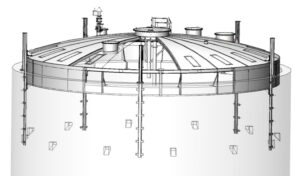
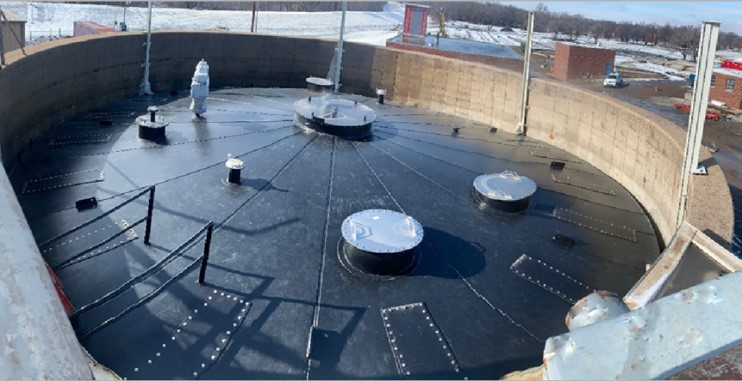
Buoyant Floating Truss Digester Cover
A primary digester cover that is effective when sludge levels vary significantly, it is also very effective in conditions where extreme foam occurs. The trusses are above the ceiling plate and are covered with roof plates to protect against the outside elements. This structure forms the “attic” which contains the ballast blocks and acts as insulation for the digestor from heat loss. The weight of the ballast blocks determines the operating pressure of the digester.
A truss design is more expensive than comparable beam covers and the attic space collects condensation which will need to be removed periodically.
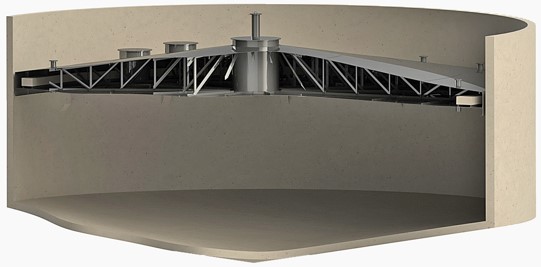
Gasholder Truss Digester Cover
Similar to the radial beam gasholder digester cover; it is also effective when sludge levels vary significantly and allows for varying gas storage. The ballast blocks are located at the bottom of the framework and are designed to set the operating pressure. The attic space acts as the insulation so additional insulation is not necessary.
This truss design is the most expensive design, and the attic space collects condensation which will need to be removed periodically.
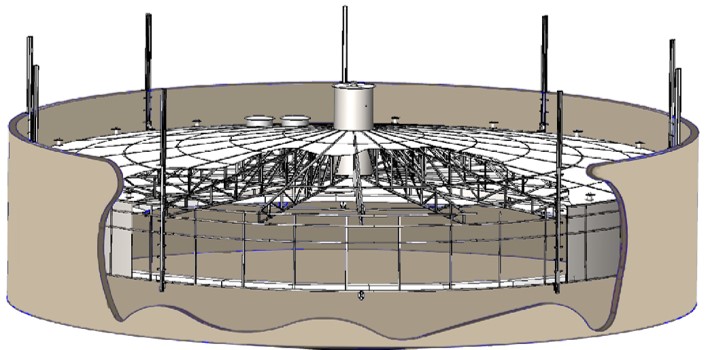
Dual Membrane Covers
Costing less than half the price of a typical steel gasholder of the same capacity, these gasholders are increasingly becoming the normal method of containing and handling biogas.
The gas storage systems are exclusively manufactured from advanced structural fabrics, and designed as membranes to provide both structural ( climatic ) stability and impermeable gas storage. No metals are used, except for the anchorage connecting the membranes to a concrete foundation slab.
The gasholders are provided with inflation fans and full instrumentation to measure and control the storage process. The membranes, unlike steel, are totally resistant to the acids inevitably formed during the biogas production process in the anaerobic digestors.
Have A Process Problem? Need A Solution?
Our engineers will ensure you get the support needed to solve your process problems.
